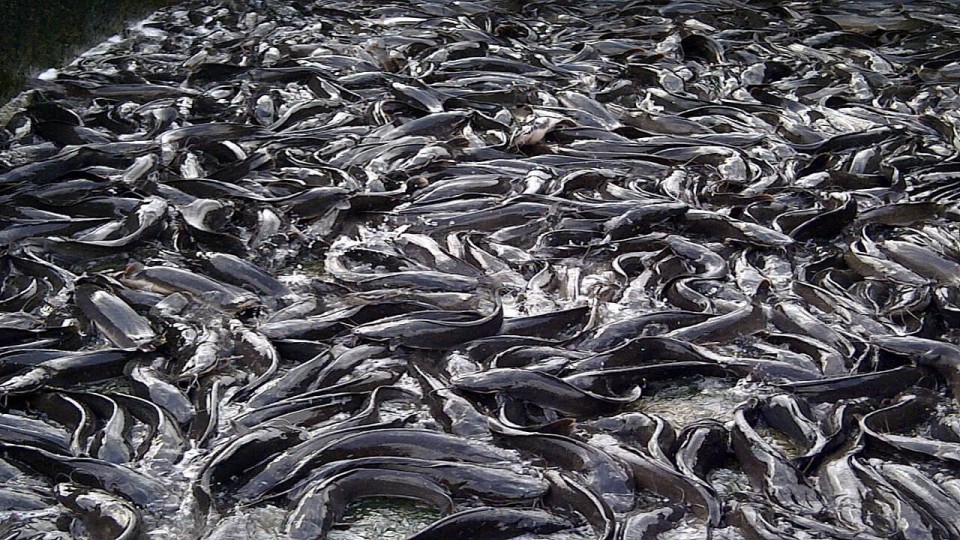- 이 주제는 비어 있습니다.
- 글쓴이글
- 3월 31, 2025 7:36 오전 #615346

Catfish farming plays a critical role in meeting the growing global demand for seafood, and understanding the proper sizing of catfish is essential for both producers and consumers.
The size of catfish directly affects market demand, as different sizes are preferred by different consumer groups and culinary applications.
This article explores the factors that influence catfish sizing, how size impacts market demand, and the strategies that producers can use to meet the needs of the market effectively.
1. The Importance of Catfish Sizing in the Market
The size of catfish is a crucial factor in determining its market value and consumer demand. Catfish are typically sold in a range of sizes, with larger fish often commanding higher prices due to their greater weight and yield. However, the market for smaller catfish also remains strong, particularly for niche markets or specific culinary uses.
Understanding the preferences of different consumer segments—such as grocery stores, restaurants, and food service industries—can help farmers adjust their production strategies to meet market expectations. For instance, smaller catfish are often preferred in whole fish sales, while larger catfish are more commonly processed into fillets or steaks for restaurants.
2. Factors Influencing Catfish Size and Growth Rates
Several factors influence the size and growth rate of catfish, including water quality, feeding practices, and genetic strain. Catfish are cold-blooded animals, and their growth is largely dependent on the temperature of
By maintaining a balance between size preferences, harvest timing, and sustainable farming practices, catfish producers can effectively meet the diverse demands of the market. Furthermore, leveraging advanced breeding techniques and innovative feeding strategies will help optimize growth rates, ensuring that farms can provide the right-sized fish at the right time.
As the global appetite for seafood continues to rise, understanding the complexities of catfish sizing will remain essential for producers aiming to stay competitive in the industry.
Additionally, it is important for producers to continuously assess consumer preferences and market trends, as they can shift with changing culinary tastes, health trends, and sustainability concerns.
The growing interest in sustainable practices and the demand for responsibly farmed fish will also influence market dynamics and the types of catfish that are in demand.
By staying adaptable and responsive to these trends, catfish producers can ensure that they are not only meeting current market demands but also positioning themselves for future success in the ever-evolving seafood market.
Ultimately, the ability to produce catfish of the right size, in the right quantities, and in a sustainable manner will continue to play a key role in satisfying the global demand for this valuable seafood resource.
3. Market Demand for Different Catfish Sizes
Market demand for catfish varies depending on size. In many regions, medium-sized catfish (around 1 to 3 pounds) are the most popular, as they are ideal for grilling, frying, or preparing whole fish dishes.
Larger catfish, typically 3 to 5 pounds or more, are favored for processing into fillets or steaks, making them more popular in restaurants and food service operations.
Additionally, smaller catfish (under 1 pound) are often preferred by certain niche markets, such as in ethnic cuisines or for use in prepared frozen products. Understanding these varying preferences can help producers decide which sizes to focus on in order to meet specific market demands and maximize profitability.
4. Harvesting Strategies and Timing for Optimal Sizing
Effective harvesting strategies are key to ensuring that catfish reach the desired market size. Timing the harvest correctly is important, as harvesting too early can result in smaller fish that do not meet market demands, while waiting too long may lead to overgrown fish that do not fetch the best prices.
Most catfish farms employ a strategy of harvesting fish in stages, based on their size and marketability.
This allows producers to meet the needs of different market segments, from smaller whole fish buyers to larger fillet consumers. Additionally, some farms may use selective breeding techniques to optimize the size of their fish, ensuring that they can meet specific market demand efficiently.
5. Consumer Preferences and Market Trends
Consumer preferences and market trends can significantly influence catfish sizing decisions. In recent years, there has been an increasing trend toward healthier eating, with many consumers preferring leaner, smaller cuts of fish.
This has led to a greater demand for medium-sized catfish, which are suitable for grilling or frying in portion-controlled servings. At the same time, the popularity of larger fish for use in prepared dishes like catfish fillets, steaks, and breaded products continues to drive demand for bigger catfish.
Additionally, there is a growing interest in sustainable and responsibly farmed fish, and consumers are becoming more discerning about the size and quality of the fish they purchase. Producers who stay attuned to these market trends can better align their production practices with consumer preferences, ensuring they meet market demand.
In conclusion, catfish sizing plays a pivotal role in meeting market demand, with different sizes appealing to different consumer groups and culinary applications.
Factors such as water quality, feeding practices, and genetic strain all influence the size and growth rate of catfish, and producers must carefully manage these factors to meet market needs.
Understanding the demand for various catfish sizes—whether smaller whole fish, medium-sized for grilling, or larger fish for fillets—can help farmers optimize their production and sales strategies.
As consumer preferences and market trends evolve, staying informed about these changes allows producers to adjust their practices accordingly, ensuring the continued success of catfish farming as a sustainable and profitable industry.
Read Also: Best Ways To Make Catfish Grow Faster
- 글쓴이글
- 답변은 로그인 후 가능합니다.

